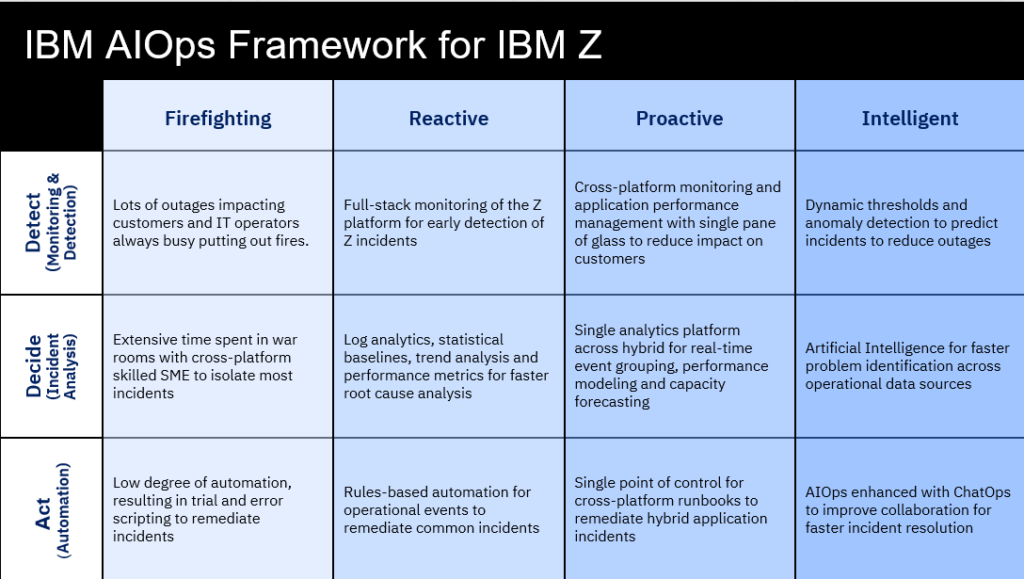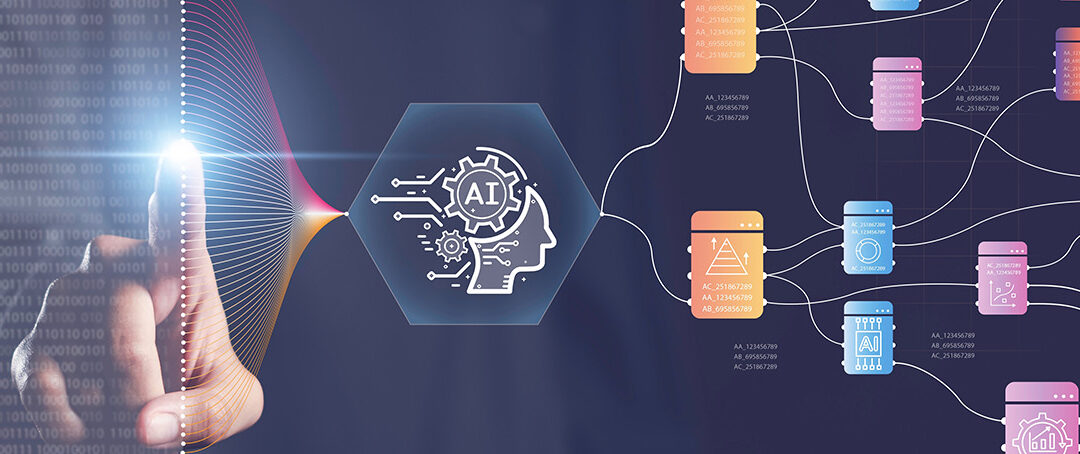The challenges of a digital business
At the heart of today’s digital business is the quality of the experience it delivers to customers, partners and employees. But today, delivering the level of service your customers have come to expect is more complicated. In the midst of rising costs, skills shortages and ever-growing security threats, you also have to adapt quickly to shifts in demand patterns brought on by an all-digital workforce and rapidly changing buyer behavior. And that requires putting extra emphasis on the resiliency and performance of your business processes and supporting applications.
For larger IT organizations with increasingly hybrid and complex application landscapes that often include IBM Z, it’s essential to take a comprehensive approach to IT operations. The challenge becomes: How do you effectively sift through terabytes of data in real time to identify an issue before it becomes an outage? That’s why organizations are drawn to the promise of AIOps to leverage AI-driven intelligence and automation to make quick and accurate decisions to maintain resiliency.
A holistic approach to AIOps that includes IBM Z
You cannot successfully adopt AIOps in pieces or silos. It requires a holistic approach focused on business processes and workflows. The resiliency of a workflow depends on the health of every link in the chain. To succeed, you need visibility and insight throughout the entirety of the workflow.
Once you understand that you must apply AIOps holistically to reach its full potential, it becomes clear why leaving the mainframe out of the equation creates a significant gap. According to a recent report by Intellyx:
“The mainframe must be central to an AIOps adoption effort not because it is somehow more important than the rest of the stack, but simply because it is an essential element of most business-critical workflows.”
Achieving a holistic approach to AIOps requires intelligent tools and processes that provide hybrid cloud visibility, leverage AI and machine learning in a simple, explainable way, and automate timely actions to avoid customer impact.
Accelerate your journey to AIOps
Over the years, IBM has worked with hundreds of organizations to help them mature how they run their data centers. To make the lessons learned from these client interactions more consumable, IBM has produced a framework that can be used as an aid to accelerate your journey to AIOps. This is a pragmatic framework, which is intended to incite a fact-based discussion around where you are and where it makes sense to go based on your business drivers and your pain points. Let’s have a look.
The four stages in the journey to AIOps are:
- Firefighting: The IT organization isn’t prepared for an issue and has to throw a lot of highly skilled people at the problem to resolve it. In this stage, consumers experience outages for long periods, and the mean time between failures (MTBF) is very low.
- Reactive: The IT organization knows about the potential issues and has procedures in place to resolve the issue. In this stage, consumers experience outages, but the outages are shorter resulting from a shorter resolution time.
- Proactive: Teams leverage tools to proactively look for issues or anomalies in the system and organize failure situations to test for response time. In this stage, consumers experience a low number of outages, and the mean time between failures is also high.
- Intelligent: Teams apply a more pervasive adoption of AI that is fully explainable. We apply machine learning to identify non-trivial anomalies, find trends, forecast problems, and remediate them before they become a service disruption.
To help you accelerate through the stages of AIOps, you need to integrate a broad set of practices and capabilities. We have divided these practices into three areas.
- Detect: Identify potential issues as soon as possible, ideally before they disrupt your business. To accomplish this, we need to focus on three areas: monitor your complete infrastructure and end-to-end application performance, generate alerts for incidents, and apply analytics for early detection of anomalies.
- Decide: Rapidly isolate the problem, do root cause analysis, and decide on the right actions. Numerous practices and technologies are used to reach this goal, including artificial intelligence to aid in the analysis and decision making, and ChatOps to collaborate across frequently siloed teams or team members.
- Act: Apply automation to enable teams to respond rapidly and preempt disruptions. This includes automating runbooks, increasing the level of automation so systems can reduce the need for manual intervention while taking self-correcting actions for more and more issues, and delivering an integrated orchestration and automation solution across our hybrid cloud infrastructure.
The below illustration provides a summary of how businesses evolve as they go through their journey.

Assess where you are with AIOps
The journey to AIOps is incremental, and each customer will take a slightly different path. Based on our work with many customers, we have captured a set of best practices that can help accelerate that journey. By organizing these practices into a well-defined descriptive framework, we aid a meaningful, fact-based discussion that can help your organization assess where you are on this journey and determine a plan for where you want to go.
To learn more about the IBM AIOps assessment and framework, join us for a 30-minute webinar.
Originally published on IBM Blogs.








I am from Rocket software Japan. I am working to promote mainframe. I would like to translate this into Japanese and post it. Is there any approval and/or agreement that is required from planet mainframe? if there is, please let me know the process. THANK YOU!
We have no problem with a translation being posted and only ask that you link back to the article when publishing.